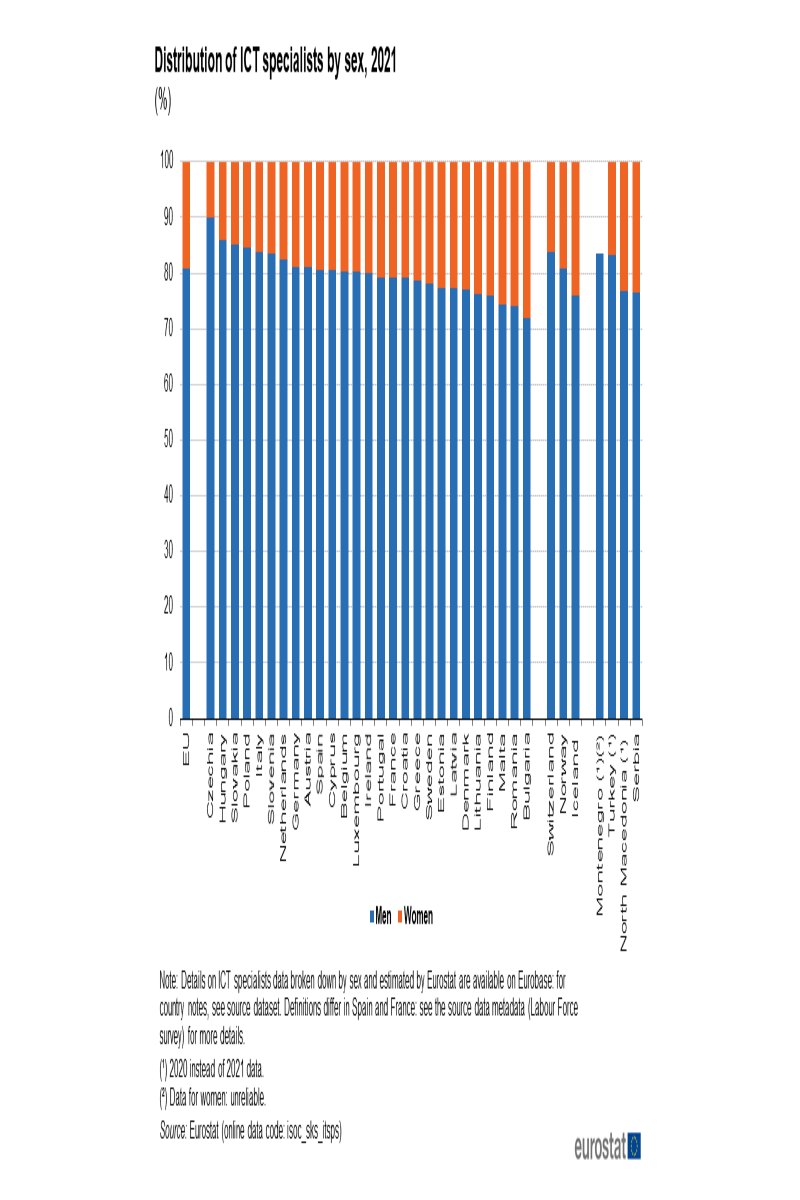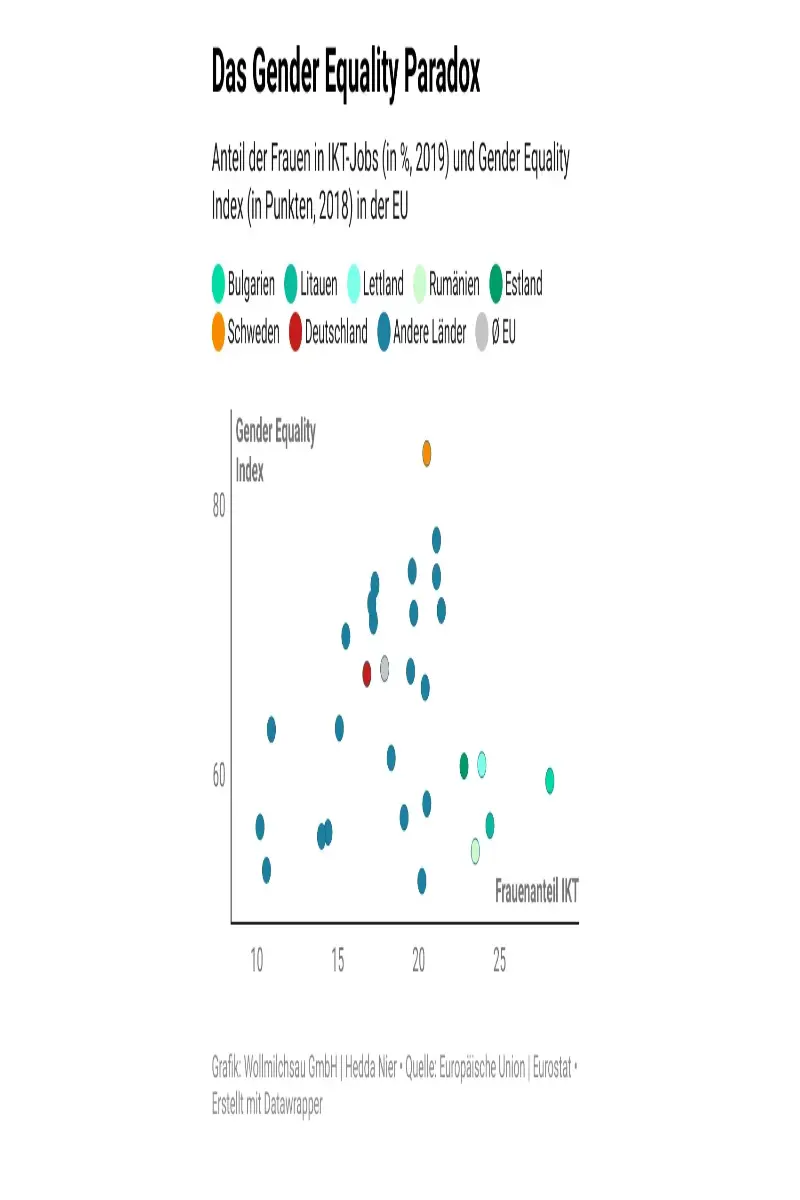24. October 2022 By Helen Bartjes
Women in IT – current figures and countries in comparison
The adesso countries in comparison
A brief summary – the percentage of women at a glance:
Bulgaria (28.2%), Finland (23.9%), Denmark (22.9%), Sweden (21.9%), Spain (19.4%), Austria (19.0%), Germany (19.0%), Netherlands (17.5%), Hungary (14.05%), Switzerland (16.3%), Turkey (16.8%)
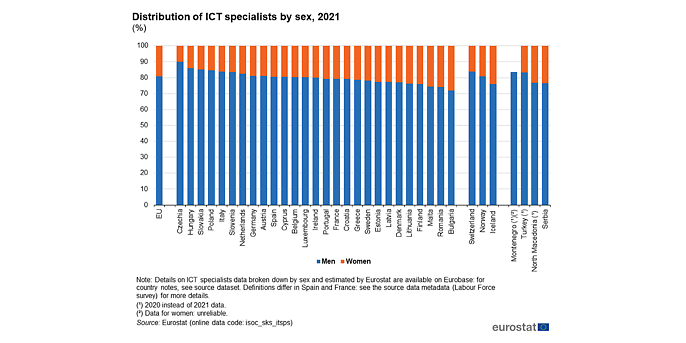
Possible reasons for the unevenly distributed percentage of women
Gender equality
The Gender Equality Index measures the state of gender equality in a given country. It factors in things such as the distribution of political power, health and also finances or education as well the distribution of care work.
It could be speculated that in countries where gender relations in society are on more equal footing, a higher percentage of women also pursue ‘typical male occupations’. However, a study found exactly the opposite and thus disproves the connection between equality and women’s choice of career, which many people see as obvious.
The study found that in countries where the rights of women are not equivalent to those of men, the percentage of women in IT is sometimes significantly higher than in countries with more pronounced gender equality. This finding is called the gender-equality paradox and is illustrated again in the figure below.
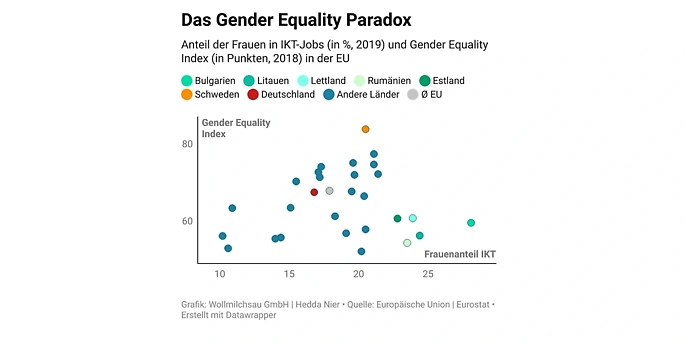
But why is it that women in countries with a lower Gender Equality Index are more likely to choose careers in the tech industry? The following counter-hypothesis was put forward in order to examine this more closely:
Whenever equal opportunity is less well developed in a country, women choose professions which they, as women, can use to achieve a better position in society.
This hypothesis is obvious in view of the figures and the gender-equality paradox described above but is difficult to prove. A study by Leeds Becket University from 2018 summarised economic opportunities and hardships as well as social and personal well-being in the indicator ‘general living conditions’. The correlation between general life circumstances and career choice was also examined in more detail.
The study can only partially prove that women in countries where the rights of women are not equivalent to those of men choose to take the STEM (science, technology, engineering and mathematics) career path in order to achieve a better position in society. While it is said that taking the STEM career path is seen as an investment in a more secure future in countries where the rights of women are not equivalent to those of men, the mediation analysis conducted in the study is only based on a handful of assumptions. The aforementioned correlation is obvious but cannot be one hundred percent proven by the study.
An example of best practice in Bulgaria
Bulgaria is both an EU country and a country that hosts an adesso location. It boasts one of the highest percentages of women in the tech industry (as can be seen in the second figure); however, its Gender Equality Index is significantly lower in comparison to that of Germany’s. Why is it that this country is able to present such a high percentage of women in IT despite there being an unequal balance between the rights of women and those of men? Let us take a closer look.
One of the most distinctive reasons is the country’s history. During its decades of socialism, women were not only called upon to work in general, but they were also specifically motivated to take up technical professions. As a result, there are a large number of female role models in the country, which has a positive impact on girls’ and women’s decisions to pursue a career in the tech industry. It is also reported that Bulgaria has been a magnet for international IT companies since joining the EU in 2007.
If we look at the education system, we can see that many educational institutions in the country have a technical focus – to be more precise, 200 high schools and 15 universities pursue this focus. In addition, many universities have a quota concerning the number of women they must enrol.
Women in IT – a non-European comparison
The global share of women in the tech industry is 28 per cent. As can be seen in the following figure, China and Southeast Asia, for example, still exceed this average by a few percent.
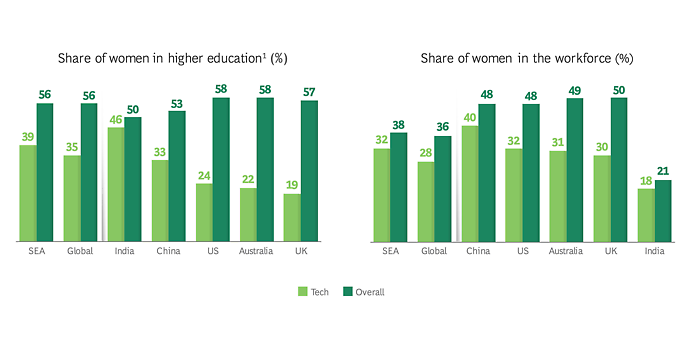
An example of best practice in Southeast Asia
In a non-European comparison, Southeast Asia is one of the leading regions, boasting a 32-per-cent share of women in the tech industry. The most significant factor for this high percentage of women is primarily deemed to be special programmes in the tech sector that are tailored to recruiting, retaining and promoting women.
In light of this, an investigation was conducted to determine which influencing factors (family, role models and so on) are of particular importance for women in their individual career paths and how these differ in each country and region. For example, it was found that women in Thailand are particularly influenced by family and society when choosing which education to pursue, while women in Singapore were more likely to cite role models and women’s networks as a decisive influencing factor in their choice of education. Factors influencing their career paths, choices of initial jobs and long-term careers were examined as well. It seems that this differentiated approach within the programmes can be seen as a crucial factor for success.
Conclusion
In this blog post, I wanted to give you an overview of the percentage of women in IT, how the countries in which adesso is present look in comparison and what possible reasons there could be for the fluctuation in figures from country to country. Aspects such as role models, a well-developed education system or the differentiated recruitment, retention and promotion of women can be identified as success factors.
Of course, none of these aspects can be implemented for this specific purpose. However, the trend shows that it is worth it to keep looking at the bigger picture in order to get new food for thought.
By the way, adesso is looking to strengthen and promote women in the IT sector with the She for IT initiative. You can learn more about our initiatives and our numerous measures and campaigns on our website.
You will find more exciting topics from the adesso world in our latest blog posts.


